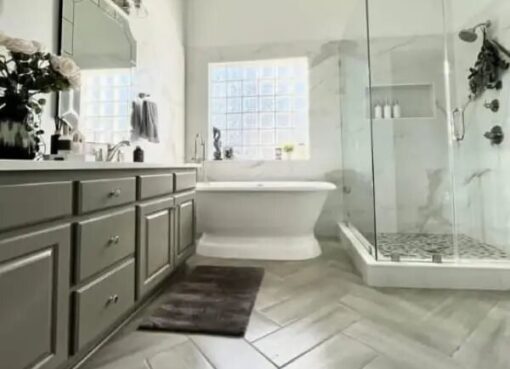How to Collaborate with Architects and Engineers Using AV CAD Drawings
Collaboration is the foundation of successful AV integration, especially when working on large-scale commercial, educational, or government projects. Audio-visual systems do not exist in isolation—they interact with architectural structures, electrical layouts, HVAC infrastructure, and control systems. To ensure seamless integration, AV designers must communicate clearly and efficiently with architects and engineers throughout the design and build process. And one of the most effective tools to achieve this is detailed, well-structured AV CAD drawings.
At the forefront of collaborative AV design, XTEN-AV empowers integrators to create professional-grade AV CAD drawings with precision, speed, and clarity. Its cloud-based design platform bridges the gap between AV, architecture, and engineering, enabling stakeholders to align early and reduce costly rework.
In this blog, we will walk through best practices and actionable tips for using AV CAD drawings to improve collaboration with architects and engineers. From aligning standards to managing revisions, this guide will help AV professionals contribute to projects more efficiently and credibly.
Why AV CAD Drawings Are Critical for Collaboration
In construction or renovation projects, multiple trades work simultaneously. Without clear communication tools, AV requirements can clash with structural or mechanical systems. AV CAD drawings serve as the universal language that links disciplines and ensures your designs are compatible with architectural and engineering plans.
Benefits of using AV CAD drawings for collaboration include:
-
Clarifying space requirements for AV racks, displays, and speakers
-
Showing cable routes that do not interfere with HVAC or plumbing
-
Defining power and data requirements for device locations
-
Avoiding mounting conflicts with ceiling grids or wall reinforcements
-
Coordinating installation timelines with other trades
With XTEN-AV, designers can build these drawings with layers, symbols, and annotations that make collaboration easier and faster.
Step 1: Align with the Architectural Floor Plan Early
Before you begin your AV design, request the latest architectural floor plan in a compatible format such as DWG or DXF. Import this plan into XTEN-AV as a background layer and align your AV components to the actual room dimensions and layouts.
Best practices:
-
Do not redraw the plan manually; always use official files to avoid discrepancies
-
Scale the floor plan accurately in your AV CAD drawings
-
Lock the background layer so it cannot be edited or moved by mistake
-
Communicate with architects to verify any architectural revisions that may impact AV placements
By aligning early, you ensure that your design reflects real-world constraints like ceiling height, wall type, and window placement.
Step 2: Use Industry-Standard Symbols and Layering
Architects and engineers expect to see clear, consistent symbols and line types. Standardizing your drawings reduces confusion and makes it easier for others to interpret your AV layouts.
With XTEN-AV, you can use preloaded AV symbol libraries and apply industry-standard layering conventions to your drawings.
Tips:
-
Use dedicated layers for audio, video, control, cable paths, and electrical needs
-
Label every device with a clear ID (e.g., DSP-01, MIC-03, PROJ-02)
-
Include legends that explain your symbols and line styles
-
Match your drawing format and naming to AIA or project-specific CAD standards
When your AV CAD drawings follow expected formats, other teams will integrate them more willingly into their models.
Step 3: Coordinate Equipment Footprint and Clearances
AV equipment often requires physical space and environmental considerations. Rack systems need ventilation, displays need mounting structure, and speakers must avoid obstructions. Architects and engineers need this information early to avoid space conflicts.
In XTEN-AV, you can visualize:
-
Rack and equipment room layouts
-
Device mounting locations on walls and ceilings
-
Cable tray pathways that coordinate with mechanical and electrical routes
-
Power and network outlet requirements
Share the following with your collaborators:
-
Minimum clearance zones for service access
-
Rack height and weight specifications
-
Speaker dispersion patterns for acoustic considerations
-
Projector throw distances and screen alignment zones
Early coordination avoids costly rework during installation.
Step 4: Include MEP (Mechanical, Electrical, Plumbing) Coordination
AV systems often rely on power and network infrastructure, which means close collaboration with electrical and mechanical engineers is crucial. Your AV CAD drawings should highlight:
-
Electrical circuit loads
-
Conduit requirements
-
Network switch and POE device placement
-
HVAC considerations for cooling racks and equipment rooms
XTEN-AV allows you to define these technical requirements in your schematics and floor plans, ensuring that engineers can plan around your system needs without guessing.
Step 5: Use Revision Control and Version Tracking
Projects evolve, and AV requirements often change during construction. To keep architects and engineers aligned, always track revisions in your AV CAD drawings.
With XTEN-AV’s cloud-based system:
-
You can share live versions of drawings instead of sending endless email attachments
-
Collaborators can comment or suggest edits directly on the platform
-
Older versions are archived automatically, reducing confusion
Include revision clouds or notes within the drawings to highlight what has changed, and update the revision block on each page accordingly.
Step 6: Communicate Through Drawing Sheets and Documentation
A good AV CAD drawing does more than show where equipment goes. It tells a complete story of the system design. Supplement your visual layouts with:
-
Title blocks that list project name, designer, contact info, and date
-
Legends and symbols key
-
Detailed elevation drawings and sections
-
Notes about installation requirements and mounting instructions
-
Signal flow diagrams that match the physical layout
XTEN-AV helps you generate and organize these sheets within a single project folder, keeping all stakeholders on the same page.
Step 7: Schedule Coordination Meetings with Visuals
Before installation, schedule review meetings with architects and engineers where you walk through your AV CAD drawings together. Use screen-sharing or printed sets to highlight:
-
Conflicts with architectural features or ceiling grid
-
Equipment that needs structural support or reinforcement
-
Overlaps with HVAC or lighting
-
Coordination of cabling routes through walls, floors, or ceilings
With XTEN-AV’s visual tools, these meetings become efficient, clear, and productive.
Conclusion
Collaborating with architects and engineers is a critical part of every successful AV project. By using clear, standardized, and well-organized AV CAD drawings, you ensure your systems integrate smoothly into the larger building infrastructure without delays or surprises.
XTEN-AV simplifies this collaboration process by offering a platform that blends professional design tools with intuitive workflows. From aligning floor plans to managing revisions and generating clean documentation, XTEN-AV empowers AV designers to speak the same visual language as architects and engineers.
With accurate AV CAD drawings as your foundation, your projects will move faster, encounter fewer conflicts, and ultimately deliver a better experience to your clients and partners.
Read more: https://social.siblia.com/read-blog/71024







Leave a Comment